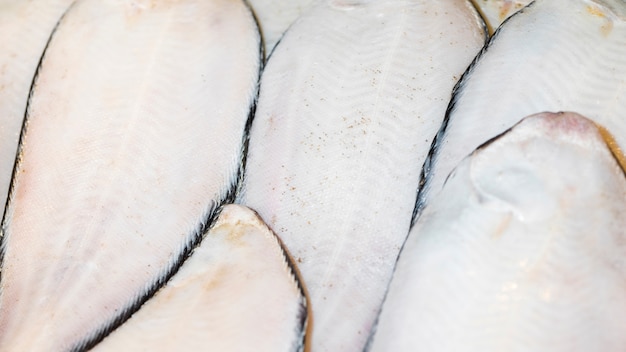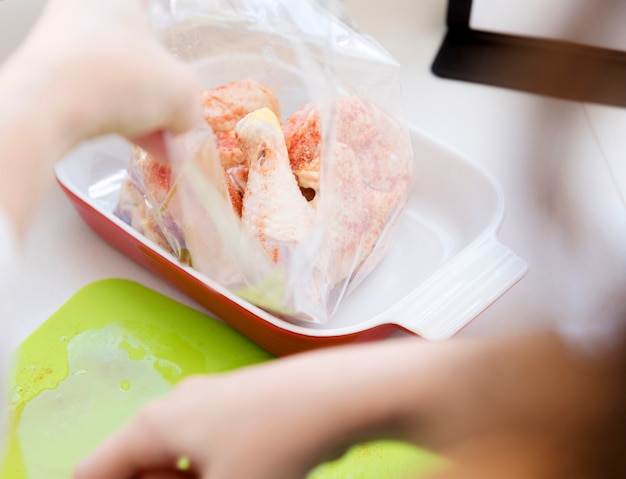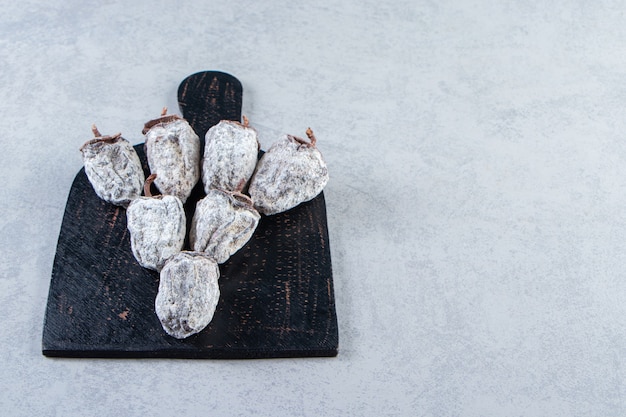Ah, frozen snow crab legs. They're a staple in many freezers, promising a delicious seafood feast. But let's be honest, cooking them perfectly can feel like a bit of a culinary puzzle. How do you avoid rubbery, overcooked legs and achieve that sweet, juicy, melt-in-your-mouth crab meat? Worry not, my fellow seafood enthusiasts, because this guide will transform you into a snow crab leg master. I'm going to share my hard-earned wisdom, including some personal stories – you know, the kind that make you chuckle (or maybe just cringe). But hey, we all learn from our mistakes, right?
Part 1: The Essential Tools – Your Seafood Arsenal

Before diving into the actual cooking, let's talk tools. You don't need a fancy, high-tech kitchen to conquer frozen snow crab legs, but the right equipment makes the process smoother, less messy, and more enjoyable.
1. The Mighty Pot – A Vessel for Crabby Goodness
You need a pot big enough to comfortably hold your crab legs. Think of it as a cozy, steamy haven for your crustacean friends. I learned this the hard way – once, I tried to cram a massive batch into a tiny pot. It was a disaster! The legs were half-cooked, and my kitchen reeked like a seafood market. Not a good look. So, get a spacious pot – they're your best friends in this endeavor.
2. The All-Important Steamer Basket – For Perfectly Steamed Crab
A steamer basket is your secret weapon. It elevates the crab legs above the boiling water, ensuring even steaming and preventing them from becoming mushy. I used to cook them directly in the pot, and the result was, shall we say, less than desirable. The steamer basket, my friends, is the key to perfectly cooked crab meat – succulent, tender, and ready to be devoured.
3. The Essential Crackers – Conquering Those Tough Shells
You can't have crab legs without a good set of crackers. Forget those flimsy plastic ones that break at the first sign of pressure. Invest in some heavy-duty, stainless steel crackers. They make cracking those shells a breeze – you'll be a crab-cracking champion in no time. Trust me on this one, you'll thank me later.
4. The Seafood Tools – Getting That Sweet, Sweet Meat
Now, this is where things get fun! The world of crab-eating tools is vast and exciting. There are crab forks, picks, even specialized leg-cracking gadgets. Personally, I'm a simple guy. I love using a trusty pair of kitchen shears – efficient and easy to use. But, if you're feeling adventurous, go wild with those fancy tools and let your inner seafood chef shine.
Part 2: The Frozen Snow Crab Leg Dilemma – Defrost or Don't?

Alright, tools are in place, and now it's time to tackle those frozen snow crab legs. The first decision you need to make is whether to defrost them before cooking. This is a matter of personal preference, and I've done both – there's no right or wrong answer.
1. The Defrosted Approach – A Slow and Gentle Thaw
Defrosting your crab legs overnight in the refrigerator is the classic approach. It's slow and gentle, minimizing the risk of damaging the delicate meat. The downside? Time. You need to plan ahead. Another option is to defrost them in a bowl of cold water, which is faster, but remember to change the water every 30 minutes.
2. The Straight-from-the-Freezer Method – For Those Busy Nights
This is my go-to approach, and I know, some people might think I'm crazy. But hear me out! If you're short on time, cooking them straight from the freezer is a lifesaver. Just add a few extra minutes to the cooking time, and voila! It's a bit of a gamble, but I've never had a bad experience with this method.
Part 3: The Secret Sauce – Flavoring Your Crab Legs

Here's where your creativity comes in! Flavoring your crab legs is all about enhancing their natural sweetness and adding a touch of your personal flair. There are endless possibilities, but I've developed some tried-and-true methods.
1. The Classic: Simple Salt and Pepper – The Simplicity of Flavor
Sometimes, less is more. A sprinkle of salt and pepper lets the natural crab flavor shine. Don't underestimate the power of simplicity. Sometimes, you just want that pure, unadulterated crab taste.
2. The Aromatic Boost: Lemon and Herbs – A Fresh and Vibrant Twist
A squeeze of fresh lemon juice and a handful of chopped herbs like parsley or dill add a delightful freshness. I love using lemon and thyme – it's a subtle yet effective way to elevate your crab legs.
3. The Spicy Kick: old bay seasoning – The Classic Seafood Spice
Old Bay seasoning is a seafood staple, and crab legs are no exception. Its blend of spices, including paprika, black pepper, and celery salt, adds a delicious kick. I always use Old Bay liberally – more is definitely better in this case.
4. The Sweet and Savory Blend: Butter and Garlic – A Rich and Decadent Treat
For a truly decadent flavor, melt some butter and add a few cloves of minced garlic. This mixture creates a rich, flavorful sauce that complements the crab legs beautifully. But don't go overboard with the garlic – you want to enhance the flavor, not overpower it.
Part 4: The Cooking Methods – Steaming and Boiling to Perfection
Now for the crucial part: the actual cooking! I'll share two methods that have always delivered perfect results. Whether you're a seasoned cook or a kitchen novice, these methods are easy to follow.
1. The Steaming Method – Gentle and Flavorful
Steaming is my personal favorite. It's gentle, ensuring juicy, flavorful meat. Here's how to do it:
- Fill a large pot with about an inch of water. Add your chosen flavoring agents (salt, pepper, lemon, herbs, etc.)
- Bring the water to a rolling boil.
- Place your crab legs in the steamer basket and lower it into the boiling water. Make sure the crab legs are completely submerged in the steam.
- Cover the pot and steam for about 10-15 minutes, depending on the size of the legs. They're cooked when the meat is opaque and easily pulls away from the shell.
- Remove the steamer basket from the pot and transfer the crab legs to a serving platter.
If you're using frozen crab legs straight from the freezer, add about 5-10 minutes to the steaming time.
2. The Boiling Method – A Quick and Easy Option
Boiling is faster than steaming, but it can sometimes lead to slightly tougher meat. But if you're in a hurry, it's a perfectly acceptable option. Here's how to do it:
- Fill a large pot with enough water to cover the crab legs. Add your flavoring agents (salt, pepper, lemon, herbs, etc.)
- Bring the water to a rolling boil.
- Gently lower the crab legs into the boiling water. Make sure the legs are completely submerged.
- Boil for about 8-12 minutes, depending on the size of the legs. They're cooked when the meat is opaque and easily pulls away from the shell.
- Remove the crab legs from the pot using a slotted spoon and transfer them to a serving platter.
If you're using frozen crab legs straight from the freezer, add about 5-10 minutes to the boiling time.
Part 5: The Art of Cracking and Enjoying – Unleashing That Delicious Crab Meat
Your crab legs are perfectly cooked. Now for the fun part: cracking those shells and enjoying that sweet, succulent meat!
1. The Cracking Technique – A Masterful Approach
I use a heavy-duty, stainless steel cracker. Hold the leg firmly in one hand and position the cracker over the joint. Give it a firm squeeze and the shell should break open. You can also use kitchen shears to cut through the shell, but be careful not to cut the meat. If you're using a crab pick or fork, carefully insert the tool into the joint and gently twist. The meat should come out easily.
2. The Dipping Delight – The Perfect Accompaniment for Your Crab
Now it's time for dipping! I'm a huge fan of melted butter, but feel free to explore. Cocktail sauce, remoulade, even a spicy sriracha mayo – the possibilities are endless! Experiment and find your perfect dip.
Part 6: The Serving Sensation – Presenting Your Crab Leg Masterpiece
Your perfectly cooked crab legs are ready to be served. Here are a few ideas to make your presentation a showstopper.
1. The Classic Buffet – A Seafood Feast for Everyone
A traditional crab leg buffet is always a hit. Arrange your cooked crab legs on a large platter, with bowls of melted butter, cocktail sauce, and napkins. Let your guests indulge and enjoy.
2. The Elegant Plate – For a Refined Presentation
For a more elegant presentation, serve your crab legs on individual plates. You can arrange the legs in a fan shape or even place them on a bed of rice or pasta. Add a dollop of butter or a sprinkle of herbs for a touch of sophistication.
3. The Informal Feast – A Relaxed and Casual Gathering
If you're having a casual gathering, simply place a bowl of cooked crab legs in the center of the table and let everyone dig in. Provide plenty of napkins and crackers, and let the good times roll.
Part 7: Leftovers: The Seafood Treasure – Turning Leftovers into Delicious Meals
Let's be honest, sometimes you end up with leftover crab legs. But don't despair! Leftover crab legs are a culinary treasure. Here are a few ideas to put those delicious leftovers to good use.
1. The Crab Salad Sensation – A Light and Refreshing Option
Combine your leftover crab meat with mayonnaise, chopped celery, onion, and a pinch of salt and pepper. Serve on bread, crackers, or lettuce leaves for a delicious and easy lunch or appetizer.
2. The Seafood Pasta Dream – A Savory pasta dish
Toss your leftover crab meat with pasta, pesto, and cherry tomatoes. It's a quick and easy meal that's packed with flavor.
3. The Crab Quesadilla Delight – A Creative and Unexpected Treat
Mix your leftover crab meat with cheese, sour cream, and your favorite spices. Spread the mixture on tortillas and grill or pan-fry until golden brown and crispy. It's a delicious and unexpected way to use up leftover crab legs.
Part 8: FAQs – Your Questions Answered
You've got questions, and I've got answers. Let's dive into some frequently asked questions about frozen snow crab legs.
1. How long can you keep frozen snow crab legs in the freezer?
Frozen snow crab legs can be stored in the freezer for up to 6 months. Make sure they are tightly wrapped in plastic wrap or aluminum foil to prevent freezer burn.
2. Can you reheat cooked crab legs?
Yes, you can reheat cooked crab legs. The best way to do it is to steam them for a few minutes until they are heated through. You can also reheat them in the oven or microwave, but be careful not to overcook them.
3. What are the signs of bad crab legs?
If your crab legs have a strong fishy smell, a slimy texture, or a discoloration, they're likely bad. It's best to discard them if you notice any of these signs.
4. Are frozen snow crab legs safe to eat?
Yes, frozen snow crab legs are perfectly safe to eat. They are typically frozen at sea, which helps to preserve their freshness and quality. Just make sure you cook them thoroughly to kill any harmful bacteria.
5. What's the difference between snow crab and king crab?
Snow crab and king crab are both delicious types of crab, but they have some key differences. Snow crab is smaller and sweeter than king crab. It's also more affordable. King crab, on the other hand, is larger and has a more intense flavor. It's also more expensive. Ultimately, it comes down to personal preference. Both types are delicious and worth trying!
There you have it, folks. My ultimate guide to cooking frozen snow crab legs. I hope you found it informative and helpful. Now get out there and conquer those crab legs. Just remember to savor every bite and enjoy the deliciousness!
Everyone is watching

Corn on the Cob: The Ultimate Guide to Perfectly Cooked Ears
Healthy MealsAh, corn on the cob. Just the name evokes images of sunny days, barbecues, and that sweet, juicy flavour that ...

Scallops: The Ultimate Guide to Perfect Cooking
Healthy MealsAh, scallops. Those delicate, sweet, and utterly delicious morsels of the sea. They hold a special place in my...

Spaghetti Squash: The Ultimate Guide to Cooking and Serving
Healthy MealsRemember that time you saw spaghetti squash at the supermarket, looking all bumpy and strange, and thought, "W...

Salmon Cooking Times: Perfect Guide for Every Recipe
Healthy MealsLet me tell you, cooking salmon is an art form. It's all about getting that perfect balance: juicy and tender,...

Ham Cooking Time: How Long to Bake, Smoke, or Boil a Delicious Ham
Healthy MealsAh, ham. It's a classic, isn't it? A real crowd-pleaser, especially around holidays. And when done right, it'...
